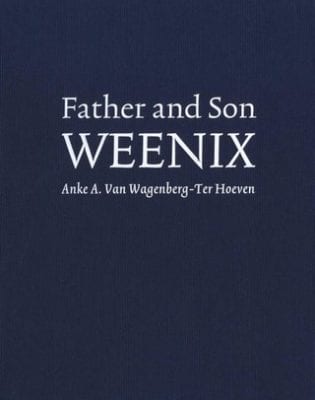An essential reference source, the catalogue raisonné is foundational for scholarship and thinking in art history. Thus Anke Van Wagenberg-Ter Hoeven’s publication of large volumes on two important artists (Weenix, father and son) is an occasion for celebration. The research, connoisseurship and care required for such a project is prodigious, and indeed the work on these catalogues began in 2004. Compilation of information on all known works by each artist includes collaborative paintings, with references to lost works, copies, and relevant drawings. Extensive listings for each work cover the usual title, dimensions, medium, location of signature and/or date (Jan Weenix dated his paintings much more often), present location, exhibition history, citations in the literature, and provenances which have been very extensively explored. The author’s comments on the paintings themselves, which appear in many but not all entries, are very useful but in most cases quite condensed and do not include remarks on condition. Since these two books are sold together, the full bibliography appears at the end of the second volume on Jan Weenix, which has an appendix, cataloguing ten flower paintings by Jan’s daughter, Maria Weenix.
Jan Baptist Weenix (1621–1659) is known as a major mid-seventeenth century Dutch painter of Italianate landscapes and harbor scenes whose works feature ruins and other Italianate motifs and figures. But, as the catalogue enumerates, he also produced marine scenes, religious and genre paintings and portraits, sometimes in collaboration with other artists such as Jan Both (1610/18–1652) and Nicolaes Knupfer (1609–1655), along with the game pieces and depictions of live animals that would become his son’s specialty. An important feature of both volumes is the author’s meticulous attention to updating and interpreting biographical and archival information. For Jan Baptist Weenix, an appendix offers the reader Houbraken’s early eighteenth-century account (in Dutch) and a transcription into modern Dutch of the extensive 175-page file assembled for Jan Baptist Weenix’s bankruptcy, declared a week after his death in 1659.
Beyond informing us about the artist himself, this material will be of interest to anyone seeking information about the life of seventeenth-century Dutch artists and their families. How this gifted, prolific, well-paid artist succeeded, only to die a bankrupt at the age of thirty-eight, leaving behind a host of creditors and an impoverished family, is indicated by the evidence of an unusually social lifestyle, poor management of time and growing debts, followed by mortal illness. That the family maid was given new clogs for the artist’s funeral is only one of the touching details one can tease out of the archives to bring this story to life.
J.B. Weenix’s chronology is laid out in the opening chapter, which tracks his varied training with Jan Micker (1598–1664), Abraham Bloemaert (1566–1651), and Nicolaes Moeyaert (1592–1655), his connections with other artists and his growing success in and beyond Italy. Paintings and drawings are interwoven with archival evidence, with the core of dated works used as an armature for mapping out his development as a whole. The catalogue of 157 works, with color illustrations, seldom assigns approximate dates but is divided into sections devoted to various subject categories, each one arranged in chronological order with small comparative color images. The number and variety of his paintings demonstrates what a lively, creative and ambitious artist Jan Baptist Weenix was. His warm colors, supple brushwork, and above all his delicate yet dramatic lighting effects and distinctively diagonal designs have given him his own special presence among other gifted Dutch Italianate painters, especially his ability to effectively combine architectural elements and landscape with both figures and animals. The material is so rich that the reader craves an essay that would fully situate the artist among his contemporaries and reflect upon what Italianate painting meant to Dutch artists and their patrons within the context of this period in northern Europe.
The longer-lived son, Jan Weenix (1641–1719), who was his father’s student, produced a larger oeuvre of 277 paintings, which are presented after an initial introduction and an account of how he was evaluated by eighteenth and nineteenth century writers. An essay treating the painter’s biography and chronology follows. Again, the catalogue of paintings is categorized by subject types. Jan now emerges more fully and forcefully as an artist whose early works have often been mistakenly attributed entirely to his father (with whom he may have collaborated) and whose artistic quality and range of subjects, even before he created his signature game pieces, can be extraordinary. Throughout the catalogue this reader found many surprises, to mention only one: a striking portrait in the Anna Maria Luisa Medici Foundation in Pisa (cat. no. 44) of a nude child in the company of a dog, ancient ruins and a silver platter of fruit.
Weenix’s animals and birds have the powerful presence of beautiful, intensely observed creatures that, whether dead or alive, acquire another life as motifs within the artist’s deftly arranged compositions. Scott Sullivan’s 1984 study of Dutch game pieces served as an important source for the preparation of this study. Susan Koslow’s 1995 discussion of Frans Snyders’s Flemish animal still life, game pieces, and hunt scenes, however, seems not to have been consulted. It might have served the author as another valuable resource.
Debates about attributions or interpretations of paintings by these two artists will now be greatly enlivened for, as with any catalogue raisonné, these volumes provide a solid foundation of accessible images and data upon which all future research and writing can be based. Equally important is the fact that they will surely stimulate and facilitate further thinking about these major painters in relation to their artistic and cultural context and the meaning and influence of their works.
Susan Donahue Kuretsky
Professor of Art Emerita
Vassar College
